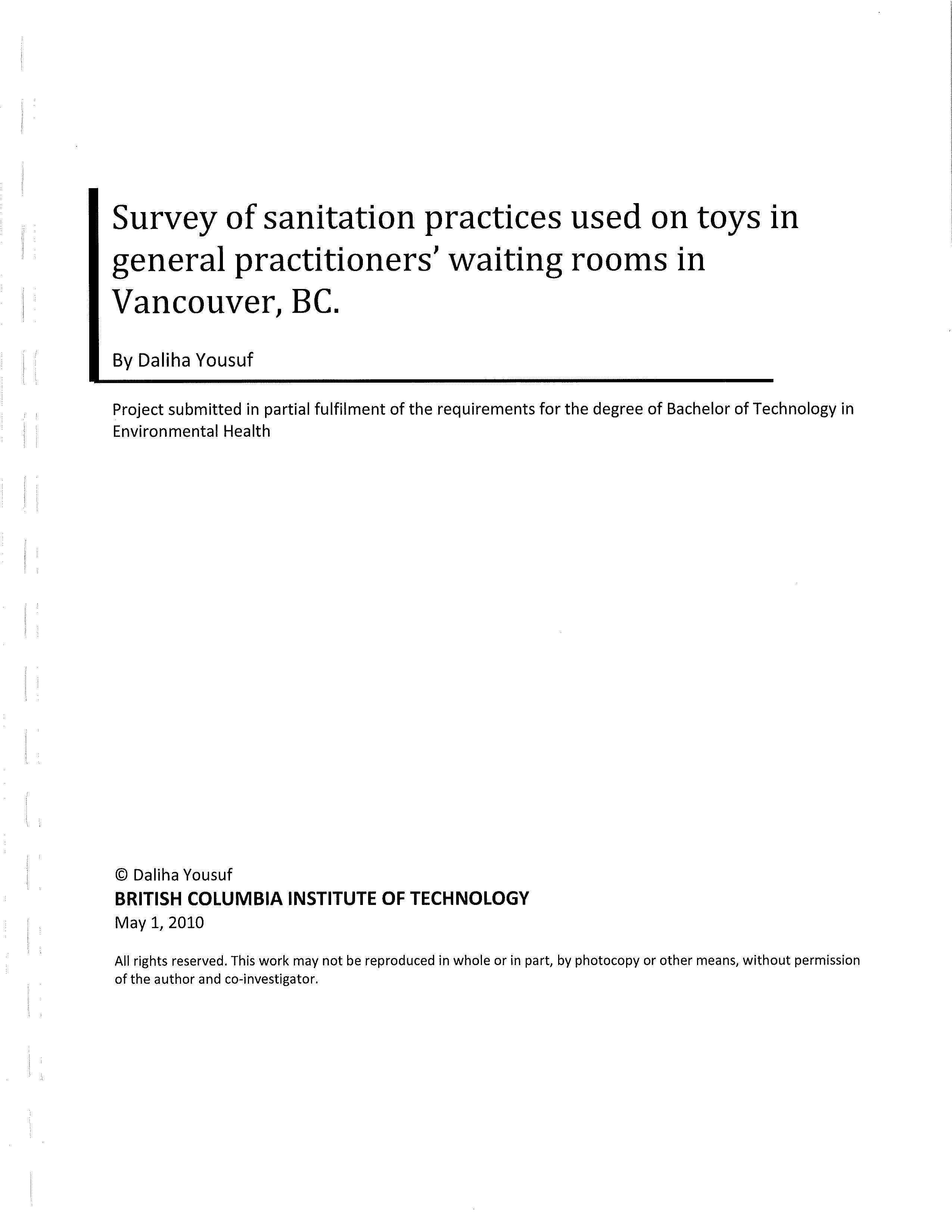Survey of Sanitation Practices Used on Toys in General Practitioners' Waiting Rooms in Vancouver, BC
DOI:
https://doi.org/10.47339/ephj.2014.246Keywords:
Sanitation and disinfection, Toy sanitation, Microbial count, Sanitation frequency, Waiting roomsAbstract
Children are a highly susceptible group for many infectious diseases due to their underdeveloped immune systems. Environments with close contact to infected individuals and contaminated items pose a threat of communicability of invasive pathogens. Doctors' offices often supply toys in their waiting areas for children to play with. Many of the children entering a general practitioner's (GP's) office are already ill and their immune systems further compromised, leaving them at a higher risk of being infected. Due to the frequent oral contact with toys, they are most likely to be a fomite for infections. This study surveyed 30 general practitioners' offices in Vancouver, BC to assess the frequency and level of disinfection of toys in comparison to the reception countertops, another waiting room surface of equal hazard level. No association was found between the level of disinfection used and surface type cleaned (P=0.432993), however, an association was found between surface type and the frequency of disinfection used (P= 0.000036). The participants were also asked if they had a sanitation plan that includes the sanitation of toys (13.33%), and whether or not they provided soft toys (36.67%), as it has been found that soft toys are difficult to disinfect and are unsuitable for waiting rooms. Results of this study were then combined with a parallel microbiological assay to find no association between disinfection levels or frequencies and bacterial levels on toys. High aerobic colony counts were still found on toys in relation to countertops in the microbiological assay. Findings of this study suggest that although the disinfection frequency for toys is not associated with bacterial levels, it should still be increased, and a more stringent sanitation plan should be implemented and enforced in general practitioners' offices, as a safety measure to reduce the survival of other potential pathogens. Further research is required to assess the association between sanitation of toys in waiting rooms and the survival of other microbial agents.
Downloads

Downloads
Published
How to Cite
Issue
Section
Categories
License
Copyright (c) 2010 Daliha Yousuf

This work is licensed under a Creative Commons Attribution-NonCommercial-NoDerivatives 4.0 International License.
Content on this site is licensed under a Creative Commons Attribution-NonCommercial-NoDerivatives 4.0 (CC BY-NC-ND 4.0) license.
